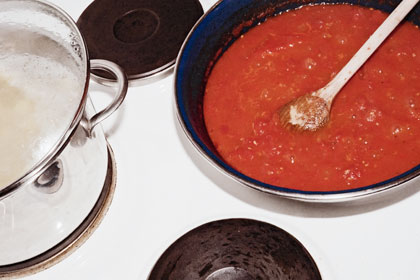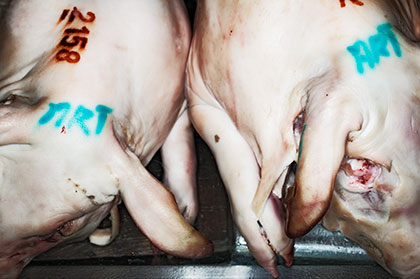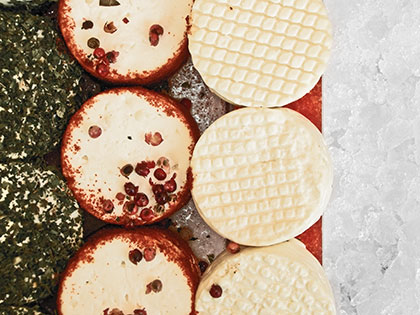The range of what people consider ‘spaghetti with tomato sauce’ is truly impressive. When I was a student in England, I would shudder at the dinners prepared in the kitchen of the dorm: tins with soft spaghetti would be warmed up, and considered a nice change from the other kind of tinned food that was constantly around, baked beans. Of course, some of my fellow students were too English to eat the latter without the former. I.e, they would pour a tin of baked beans on their plate of tinned spaghetti (also nice on microwaved pizza—grrr!).

Fast forward to my first trip to the US. To some remote place near Washington D.C. There, of course, I made my way to an Italian restaurant. It took me a while to figure out that Spaghetti Pomodoro was called Spaghetti Marinara. The even greater cultural shock came when the plate was actually sitting in front of me.
Fast forward again, to today’s Manhattan, where people have come to refer to spaghetti with tomato sauce as Spaghetti Pomodoro. In my daily life here, I once in a while take real consolation in buying Italian tomatoes, packed in Italy (read the small print on the tin you are buying!), and Italian pasta, packed in Italy. I have a really cheap dinner, and for a quick moment pretend that I am not here.
My favorite versions, however, are entirely out of reach here, and only to be had during my extensive stays at home. As it is well known, the key differences between regional cooking in Italy reside in the fats: butter up north, parmigiano next, then mozzarella, and finally only olive oil. So the true sequence, when you travel from north to south (in order to get to my much-loved island Procida near Naples), is this. Gnocchi with a light tomato-butter sauce while you are still in the mountains. Next come ravioli with tomato-parmigiano. At the tuscan seaside then, you’ll have penne with fresh yellow and red tomato, and cold bits of Mozzarella on top. And then my favorite, spaghetti with slowly cooked grape tomato with parsley and olive oil in Calabria.
Now here’s my historical speculation: In the south, people throw in all kinds of seafood, whatever is available. So maybe, when Italians from the south first made it to the US, they held on to the name of the tomato-plus-seafood version, Spaghetti Marinara, out of homesickness! Even though no bit of mare was going to be part of the dish.


